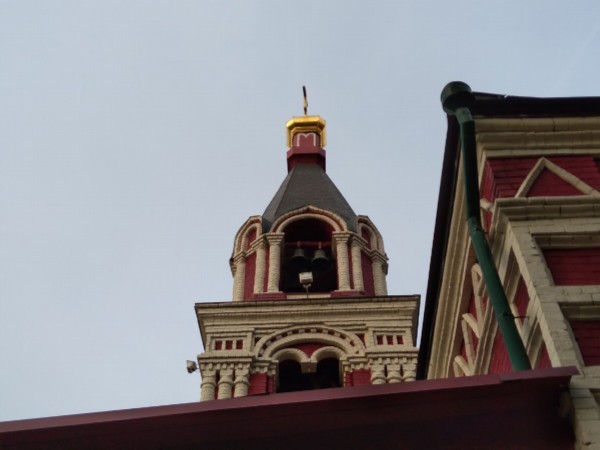
The only surviving church of St. Paraskeva in Moscow, Butovo
In the south-west of Moscow, in the North Butovo area, not far from the metro station Bulvar Dmitriy Donskoy, among multi-storey buildings there is an ancient temple of the Great Martyr Paraskeva Pyatnitsa. This saint is considered one of the most revered in Orthodoxy; among the Russian people she received the nickname Friday. It is interesting that the Christian saint Paraskeva supplanted in the worldview of the Eastern Slavs the image of the pagan goddess Mokosha (Mokoshi), who was considered the patroness of the family hearth, fertility, and harvest.

About Saint Paraskeva
Saint Paraskeva was considered the keeper of the Russian tsars, the heavenly patroness of Prince Alexander Nevsky, the entire Romanov family. There is an interesting fact that on some of the North Russian icons her face was depicted on the back of the icons of the Mother of God.
Previously, there were 3 churches in Moscow, consecrated in memory of the saint – in Okhotny Ryad, Zamoskvorechye and Butovo. Unfortunately, there is only one temple left in Butovo, which has a rich history.
The temple of Paraskeva Pyatnitsa in Butovo is located in Kachalovo, an area that got its name from the village of Kiovo-Kachalovo. It has been mentioned in chronicles since the 16th century. The village was separated from Moscow by two dozen kilometers of forest, and initially a chapel was built here, and then a wooden temple. The wooden church was burned down at the end of the 16th century during the Polish-Lithuanian invasion (1612).


The history of the founding of the temple
In 1692, on the site of the wooden church, construction began on a stone one with an extension – the side-altar of the Nativity of the Most Holy Theotokos. At that time, the village was owned by Prince Ivan Ivanovich Shcherbakov, with whose money the temple was built. The consecration of the temple took place in 1694.
The temple existed for over 200 years, but it was badly dilapidated. In 1901, a plan for its reconstruction was approved under the leadership of the architect N.N. Annunciation. The temple was significantly expanded, a bell tower was built on one tier. The architectural appearance of the temple was greatly changed; in fact, the temple was rebuilt and consecrated in 1904.



Temple style
The Church of St. Paraskeva Pyatnitsa in Kachalovo is made in the pseudo-Russian style, which is characterized by elements of ancient Russian architecture and Byzantine motives. In the 30s. XX century, the temple was closed, relics and shrines were taken out and disappeared.
The premises of the temple were given over to production and by 1980 it turned out to be worn out by almost 80% and slowly collapsed. In the 90s. the last century began the restoration of the temple from the ruins. In 1998, the back ones were restored and consecrated by His Holiness Patriarch Alexy II, in 1999 the domes of the temple were gilded, and the belfry was finished.


The largest bell weighs 480 kg. The main altar is consecrated in honor of the Holy Great Martyr Paraskeva, a chapel in honor of the Nativity of the Most Holy Theotokos and a side altar in honor of the Holy Blessed Grand Duke Dmitry Donskoy.
The temple is small, very cozy, but at the same time it looks festive and solemn thanks to its bright red color.



